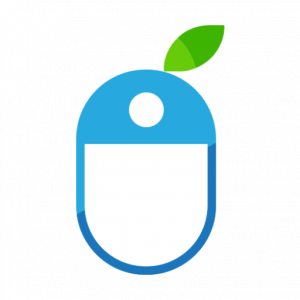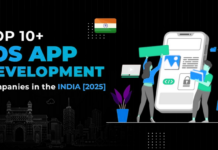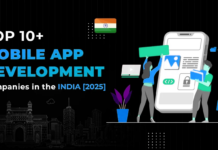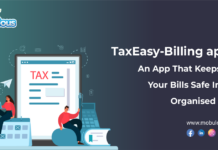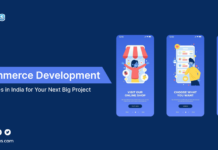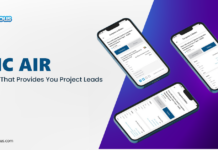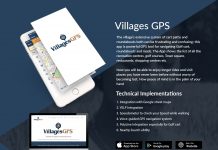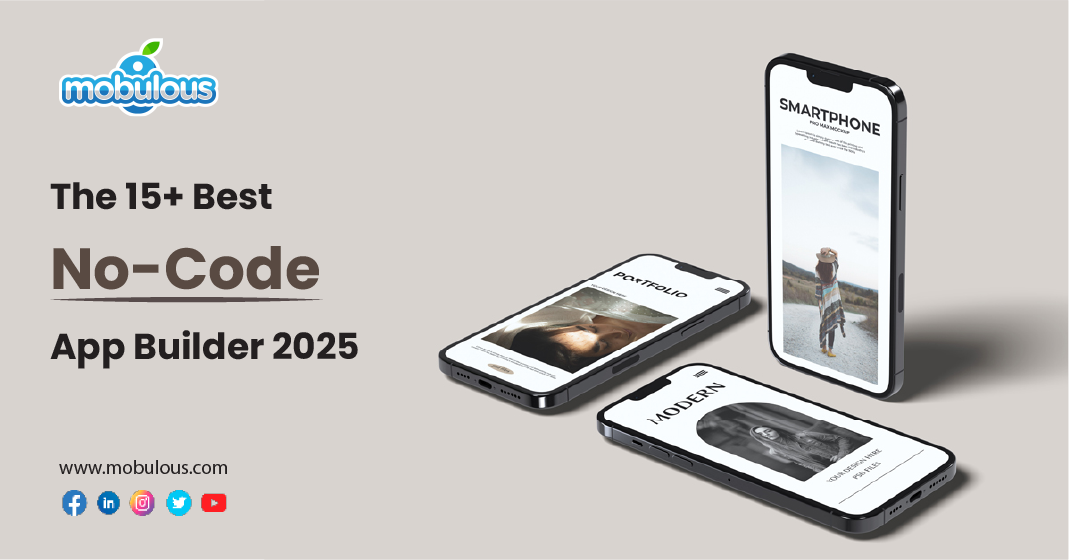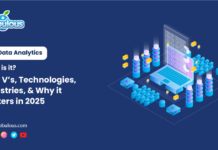The 15+ Best No-Code App Builders 2025
We are sure you can’t forget the time when you need to have advanced knowledge of coding practices for mobile app development. But with the advancement of no-code app builders, developers have now become free from this requirement.
These no-code app development platforms are powerful enough to help you create almost anything, be it apps, websites, automations, or IoT integrations without even typing ‘function().’
Let’s move ahead and have a look at the best no-code development tools such as Bubble, Adalo, Glide, OutSystems, etc, and learn how they can help you with application development without coding.
For Query:- Seek Help From a Mobile App Development Company!
A Quick List of the 15+ Best No-Code App Builder 2025
With the advancement of no-code app development, no-code app builders or tools have gained significant traction. From Bubble to Quixy, there are so many no-code platforms to use in 2025 for mobile application development. Below are the best no-code app builder platforms available:
- Bubble
- Adalo
- Glide
- OutSystems
- Thunkable
- Webflow
- AppGyver
- Google AppSheet
- Wappler
- Betty Blocks
- Softr
- Quixy
- Airtable
- FlutterFlow
- Mailchimp
- QuickBase
Top 15+ Best No-Code App Builder 2025 — Explained in Detail
As we are heading ahead in 2025, the need for the best tools for app development is at the highest demand. As a result, platforms like Bubble, Adalo, Glide, and various others have come into existence. Let’s learn about these tools in a broader way:
1. Bubble
Bubble is the best no-code app builder for power and ease of use that has its own visual coding language. This makes it highly accessible for beginners to create an application without coding, while still providing the flexibility of a platform on the low-code ecosystem.
You will have full authority over the way your mobile app looks, its overall performance, and its data structure. And, because of this, Bubble is considered one of the best tools for putting prototypes and fully-fledged products altogether that are ready to scale. Due to its expansive benefits, Bubble is used by a majority of firms to come up with highly scalable apps.
- Overview: Bubble is a robust no-code app builder that is used for advanced web app development, offering a drag-and-drop interface and enabling complex functionality.
- Key Features: Below are the key features that Bubble contains to create an app without coding:
-
- Responsive design for web apps.
- Database integration and API connections.
- Custom workflows and logic.
- Scalable for startups and enterprises.
- Use Cases: Marketplaces, SaaS products, social networks, and CRMs.
- Pricing: Free tier available; paid plans start at $29/month.
| Pros | Cons |
| Visual development interface | Steeper learning curve |
| Extensive plugin ecosystem | Slower loading times |
| Advanced logic capabilities | Can get expensive at scale |
| Responsive design | Limited native mobile features |
| Strong community support | Complex workflows can become unwieldy |
2. Adalo
Adalo is a powerful no-code app builder platform that enables users to create highly functional mobile applications and web apps without compiling code and using a drag-and-drop interface.
This tool enables anyone to create apps visually without any requirement of having advanced coding knowledge. It is considered one of the easiest no-code programming tools that are available today without lowering the quality of the app.
- Overview: Adalo excels in mobile application development with an emphasis on simplicity and design.
- Key Features: Below are the key features that Adalo contains to create an app without coding:
-
-
- Drag-and-drop interface for mobile apps.
- Pre-built components and templates.
- Integration with third-party APIs.
- Publish directly to app stores.
-
- Use Cases: Mobile apps for small businesses, events, or personal projects.
- Pricing: Free tier available; paid plans start at $45/month.
| Pros | Cons |
| Mobile-first approach | Limited customization |
| Intuitive interface | Fewer integrations |
| Native app feel | Performance issues with complex apps |
| Direct publishing to app stores | Limited database functionality |
| Component marketplace | Restricted design freedom |
Also Read:- What Are Object-Oriented Programming Languages?
3. Glide
Although Glide works perfectly on Desktop, however, the way it structures the layout and functionality of your applications makes it the best fit if you are targeting mobile. If you use this platform, you don’t need to fine-tune the way it looks as this tool is pretty simple and easy to use.
In Glide, every page is called a tab, each having one out of eight available layouts, including swipe, cards, icons, checklists, etc, thus establishing the overall look and functionality.
Additionally, you get a details layout where you can customize the functions as per your preferences as it allows you to add components in your app like buttons, date pickers, and other input fields.
-
- Overview: Glide turns Google Sheets into mobile apps quickly and easily.
- Key Features: Below are the key features that Glide contains to create an app without coding:
-
- Real-time data syncing with Google Sheets.
- Simple UI for building apps.
- Publish as a web app or mobile app.
- Use Cases: Internal tools, event apps, and inventory management.
- Pricing: Free tier available; paid plans start at $25/month.
| Pros | Cons |
| Google Sheets integration | Limited functionality for complex apps |
| Fast development time | Minimal design customization |
| Simplest learning curve | Dependent on Google Sheets for larger projects |
| Free tier available | No true native apps |
| Progressive web app output | Limited offline capabilities |
4. OutSystems
OutSystems is another no-code app builder site that creates apps without writing any code, utilizing its drag-and-drop interface, visual workflows, and pre-built components in order to build apps seamlessly and promptly, even for users who don’t have coding knowledge.
Essentially, through this platform, you can create software through a no-code approach. However, it is an important distinction that OutSystems is usually associated with “low-code” development, which enables coding when required.
So, if you want to have customization as per your preferences and business goals, then you can perform coding on this platform and tailor your app as per your needs seamlessly.
-
- Overview: OutSystems is a low-code platform for building enterprise-grade applications.
- Key Features: Below are the key features that OutSystems contains to create an app without coding:
-
- Full-stack development (front-end and back-end).
- Integration with existing systems.
- AI-assisted development.
- Scalable for large organizations.
- Use Cases: Enterprise applications, legacy system modernization.
- Pricing: Contact for pricing (enterprise-focused).
| Pros | Cons |
| Enterprise-grade security | Expensive for small businesses |
| Advanced scalability | Complex for beginners |
| Legacy system integration | Requires technical knowledge |
| Full development lifecycle | Overkill for simple applications |
| Both cloud and on-premises | Vendor lock-in concerns |
5. Thunkable
Thunkable is another platform that is used for no-code app building, enabling users to create top-performing and highly scalable mobile apps for Android and iOS devices without typing a code, leveraging drag-and-drop interface to design screens, connect to different features, and add logic.
This generally allows anyone to build applications who doesn’t even have basic coding knowledge. This is one of the best platforms to design and develop mobile apps visually rather than compiling code.
-
- Overview: Thunkable is a no-code platform for building mobile apps.
- Key Features: Below are the key features that Thunkable contains to create an app without coding:
-
- Drag-and-drop interface.
- Live testing on devices.
- Integration with APIs and services like Google Maps.
- Use Cases: Mobile apps for small businesses, education, and personal use.
- Pricing: Free tier available; paid plans start at $13/month.
| Pros | Cons |
| Cross-platform (iOS/Android) | Limited template options |
| Block-based and JavaScript coding | Less robust for complex applications |
| Extensible with custom code | Smaller community than competitors |
| Good for beginners | Some advanced features require coding |
| Direct app store publishing | Limited web app capabilities |
For Query:- Seek Help From a Cross-Platform App Development Company!
6. Webflow
Webflow is an ultimate no-code app builder tool that is used to create websites without programming, permitting users with zero coding experience in order to build advanced designs through a visual drag-and-drop interface.
Through this platform, users can design and build robust CMS-connected components and websites by using simple visual components instead of writing code directly. On this site, you get the power of HTML, CSS, and JavaScript in a seamlessly usable canvas.
-
- Overview: Webflow is a no-code platform for designing and building responsive websites.
- Key Features: Below are the key features that WebFlow contains to create an app without coding:
-
- Visual CSS and HTML editor.
- CMS for dynamic content.
- E-commerce capabilities.
- Hosting included.
- Use Cases: Websites, blogs, and e-commerce stores.
- Pricing: Free tier available; paid plans start at $12/month.
| Pros | Cons |
| Professional-quality design control | Not for full applications |
| Excellent CMS capabilities | Limited functionality beyond websites |
| Clean code output | Pricing can add up with features |
| SEO-friendly | Steeper learning curve |
| Export code option | More designer than developer-focused |
7. AppGyver
AppGyver is a platform for no-code app development, enabling users to develop mobile and web apps without writing any code. This allows anyone to build apps without worrying about not having coding understanding.
This can be done through drag-and-drop interfaces which help you create native mobile applications and deploy them on the Google Play Store and Apple App Store. It also enables you to publish web applications that your users are able to access using their browsers.
-
- Overview: AppGyver is a no-code platform for building web and mobile apps.
- Key Features: Below are the key features that AppGyver contains to create an app without coding:
-
- Drag-and-drop interface.
- Logic and database integration.
- Free to use (acquired by SAP).
- Use Cases: Prototyping, internal tools, and mobile apps.
- Pricing: Free.
| Pros | Cons |
| Completely free | Less intuitive interface |
| Visual logic builder | Smaller community support |
| Advanced data modeling | Documentation gaps |
| Native app performance | Uncertain future (acquired by SAP) |
| Extensive component library | Complex projects require technical knowledge |
8. Google AppSheet
Google AppSheet is another platform in our list of the best no-code app builder tools that authorizes users to create custom apps and automate business processes without typing any code. Through this, anyone can develop apps by leveraging a visual interface in order to design and configure features, primarily by using data from Google Sheets.
It is basically considered a part of Google Workspace and allows users to build mobile and web applications with different features like workflows, data gathering, and integrations with other Google services.
-
- Overview: AppSheet allows users to create apps directly from Google Sheets, Excel, or other data sources.
- Key Features: Below are the key features that Google AppSheet contains to create an app without coding:
-
- No-code app development.
- Integration with Google Workspace.
- AI-powered automation.
- Use Cases: Data-driven apps, inventory management, and field service apps.
- Pricing: Free tier available; paid plans start at $5/user/month.
| Pros | Cons |
| Spreadsheet integration | Limited design flexibility |
| AI-powered features | Mobile UI constraints |
| Google ecosystem integration | Complex pricing structure |
| Offline capabilities | Performance issues with large datasets |
| Automation features | Less suitable for consumer apps |
9. Wappler
Wappler has the ability to create robust web apps with its no-code app builder features that enable developers to make this possible even without having coding knowledge, primarily through a visual drag-and-drop interface and various templates available.
Furthermore, Wappler not only offers this but also sophisticated features for those developers who want to access and modify the underlying code for more customization. It has various API integrations that help you add features to your app without manual programming.
-
- Overview: Wappler is a no-code/low-code platform for building web apps and websites.
- Key Features: Below are the key features that Wappler contains to create an app without coding:
-
- Visual design tools.
- Database integration and API connections.
- Built-in Bootstrap framework.
- Use Cases: Web apps, dynamic websites, and CMS.
- Pricing: Starts at $19/month.
| Pros | Cons |
| True code generation | Steeper learning curve |
| Server-side capabilities | Smaller marketplace |
| No vendor lock-in | Less beginner-friendly |
| Database flexibility | Requires hosting setup |
| One-time purchase option | Limited templates |
10. Betty Blocks
Betty Blocks is a robust no-code app builder site that permits users to create web and mobile apps without having a basic or advanced understanding of any programming language.
By leveraging a visual drag-and-drop interface and making it accessible to non-coders, you can develop custom apps seamlessly for business needs like customer portals, internal tools, and workflow automation.
This platform is basically a cloud-based and low-code application development platform that speeds up the development time of enterprise software and apps without typing a single line of code.
-
- Overview: Betty Blocks is a no-code platform for building enterprise-grade applications.
- Key Features: Below are the key features that Betty Blocks contains to create an app without coding:
-
- Drag-and-drop interface.
- Integration with existing systems.
- Scalable for large organizations.
- Use Cases: Enterprise apps, workflow automation, and customer portals.
- Pricing: Contact for pricing (enterprise-focused).
| Pros | Cons |
| Enterprise security features | Enterprise pricing |
| Advanced workflow capabilities | Overkill for simple projects |
| Multi-user collaboration | Technical knowledge beneficial |
| Role-based development | Limited design flexibility |
| Flexible deployment options | Smaller community than leaders |
11. Softr
Softr is the best no-code app builder for complete beginners. It is really easy to use and contains plenty of useful templates.
Don’t judge Softr with its looks because it gives a complex vibe, still, it is one of the most powerful tools for app development that provides you with a variety of functionalities along with customization options at your fingertips.
-
- Overview: Softr is a no-code platform for building web apps and marketplaces using Airtable as a backend.
- Key Features: Below are the key features that Softr contains to create an app without coding:
-
- Pre-built templates.
- Integration with Airtable.
- Membership and payment features.
- Use Cases: Marketplaces, membership sites, and directories.
- Pricing: Free tier available; paid plans start at $49/month.
| Pros | Cons |
| Airtable/Google Sheet integration | Limited to web applications |
| Quick setup time | Less customization flexibility |
| User portal capabilities | Dependent on external databases |
| Membership site features | Not for complex applications |
| Affordable pricing | Limited interactive elements |
12. Quixy
Quixy is a leading no-code app builder platform that enables users to create tailored apps and automate workflows without writing any code just like the other tools.
But what makes it different from others is its data management, forms creation, workflow automation, etc capabilities which make it ideal for non-coders to create business tools promptly.
-
- Overview: Quixy is a no-code platform for building business applications.
- Key Features: Below are the key features that Quixy contains to create an app without coding:
-
- Drag-and-drop interface.
- Workflow automation.
- Integration with third-party tools.
- Use Cases: HR apps, project management, and customer support.
- Pricing: Contact for pricing.
| Pros | Cons |
| Business process automation | Business focus, less consumer |
| Enterprise compliance features | Limited design flexibility |
| Workflow management | Not for public applications |
| Integration capabilities | Primarily enterprise pricing |
| Role-based access control | Smaller developer community |
13. Airtable
Airtable is one of the best no-code app builders on the internet that has the capability to build apps and workflows without writing any code, enabling individuals with zero coding skills to create tailored tools and manage data through a user-centric interface.
Airtable allows you to store, control, and edit data at scale, then plug it into any number of other no-code tools like Zapier. This tool is essentially used for different tasks like project management, task lists, contact databases, document management, etc.
-
- Overview: Airtable is a no-code platform for creating databases and workflows.
- Key Features: Below are the key features that Airtable contains to create an app without coding:
-
- Spreadsheet-like interface.
- Custom views (grid, calendar, Kanban).
- Integration with third-party tools.
- Use Cases: Project management, CRM, and content planning.
- Pricing: Free tier available; paid plans start at $10/month.
| Pros | Cons |
| Powerful database capabilities | Limited front-end capabilities |
| Extensive template gallery | Not a complete app builder |
| API Access | Can get expensive with records |
| Automation features | Limited design control |
| Strong integration ecosystem | Better as a backend |
14. FlutterFlow
FlutterFlow is a tool for no-code app building capabilities that was created by two ex-Google engineers with Flutter framework expertise. Flutter can create apps for iOS, Android, Mac, Windows, and even Linux.
Not only, does this platform provide front-end development scope but also back-end development potential. This simply means users are able to design the app’s user interface (UI) and enforce advanced back-end functionality without compiling code.
-
- Overview: FlutterFlow is a no-code platform for building mobile apps using Google’s Flutter framework.
- Key Features: Below are the key features that FlutterFlow contains to create an app without coding:
-
- Drag-and-drop interface.
- Real-time collaboration.
- Export code for further customization.
- Use Cases: Mobile apps for startups and businesses.
- Pricing: Free tier available; paid plans start at $30/month.
| Pros | Cons |
| Native Flutter code output | Requires Flutter knowledge for full benefit |
| Performance of native apps | Higher learning curve |
| Code exportability | Limited templates |
| Advanced animations | Newer platform, fewer resources |
| Firebase integration | Less suitable for web-only apps |
15. Mailchimp
Mailchimp is another no-code app builder on our list that has various advanced features to create and manage email marketing campaigns, automate workflows, and build websites without coding.
Because of its user-friendly interface with frag-and-drop functionality and pre-built templates, Mailchimp has become highly accessible even to non-technical people, allowing them to create apps from scratch without even having a technical experience on the table.
-
- Overview: Mailchimp is primarily an email marketing platform but offers no-code website and landing page builders.
- Key Features: Below are the key features that Mailchimp contains to create an app without coding:
-
- Drag-and-drop website builder.
- Integration with email marketing tools.
- E-commerce capabilities.
- Use Cases: Small business websites, landing pages, and email campaigns.
- Pricing: Free tier available; paid plans start at $13/month.
| Pros | Cons |
| Email marketing integration | Limited to marketing sites |
| Landing page builder | Not for full applications |
| Customer journey automation | Restrictive templates |
| Analytics included | Email-centric functionality |
| Marketing focus | Not a true app builder |
16. QuickBase
Last but not least, QuickBase is an ultimate cloud-based platform that enables developers to create tailored business apps and automate workflows without having technical skills.
This tool is built to empower dynamic teams in order to solve advanced problems. It offers an exceptional and robust database engine that incorporates graphical and relational structures in order to allow both analytics and transactions.
-
- Overview: QuickBase is a no-code platform for building custom business applications.
- Key Features: Below are the key features that QuickBase contains to create an app without coding:
-
- Drag-and-drop interface.
- Workflow automation.
- Integration with third-party tools.
- Use Cases: Project management, CRM, and field service apps.
- Pricing: Contact for pricing (enterprise-focused).
| Pros | Cons |
| Advanced data relationships | Business/enterprise focus |
| Workflow automation | Higher pricing |
| Enterprise security | Less intuitive interface |
| Reporting capabilities | Limited design customization |
| Integration Ecosystem | Not for consumer applications |
What is No-Code App Development?
No-code app development allows users to create highly functional and top-performing apps without writing code. By using visual interfaces with drag-and-drop components, logical workflows, and pre-built templates, these platforms translate user actions into working software.
They democratize app development, enabling non-technical people to bring their vision to existence while significantly reducing app development time and technical barriers.
Why No-Code App Builders Are Considered a Good Option for App Development?
No-code app builder tools dramatically reduce the cost and time of mobile app development by eradicating the need for coding expertise. They empower busines users to develop solutions promptly and independently, thus bridging the IT skills gap.
With quick deployment, reduced maintenance requirements, and iterative development capabilities, these tools enable organizations in order rapidly respond in order to market needs while reducing technical debt.
Features of No-Code App Builders
No-code app builders share crucial features that allow non-technical users to develop functional apps effectively. These capabilities transform the application development procedure from coding-intensive to visually intuitive. Below are the key features of no-code app builders:
1. Visual Development Interface
Intuitive drag-and-drop interfaces enable users to build apps by arranging pre-built components on a canvas.
These WYSIWYG (What You See Is What You Get) editors provide quick visual feedback that enables creators to design interfaces, structure data relationships, and define navigation flows through simple point-and-click actions rather than writing advanced code.
2. Pre-Built Templates and Components
Comprehensive libraries of ready-made templates, and functional modules accelerate development and UI components.
Users can leverage industry-specific templates or functional elements like payment processors, authentication systems, and data visualization tools that work out of the box while maintaining customization options in order to suit specific necessities.
3. Visual Logic and Workflow Builders
Flow-based programming interfaces enable the development of complex business logic without having basic or advanced coding knowledge.
Users define conditions, triggers, and actions through visual flowcharts or rule builders, enabling them to enforce sophisticated processes like conditional notifications, workflows, and complex calculations through intuitive logical constructs.
4. Database Management and Integration
Built-in database capabilities enable users to create, modify, and handle data models without even having robust SQL proficiency.
These platforms provide visual relationship mapping, seamless connections, and automated API generation to external services that enable apps to maintain, process, and exchange data across different systems through simple configuration.
5. Deployment and Lifecycle Management
One-click publishing options simplify the transition from app development to production.
These platforms manage security implementation, infrastructure provisioning, and scaling automatically while offering built-in analytics, monitoring tools, and version control systems that facilitate continuous improvement without technical complexity.
A Quick Review
The no-code app development landscape continues to evolve with platforms catering to diverse needs, from business workflows to mobile apps and marketing sites.
The best solution depends on your specific requirements, technical comfort, budget constraints, and the type of no-code app builder you’re using currently.
As these above-mentioned tools mature, they increasingly blur the line between professional development and citizen creation, making software development accessible while addressing enterprise needs.
FAQs — Best No-Code App Builder 2025
Q. What is no-code app development?
Ans. No-code app development allows users to build functional applications through visual interfaces without writing code. Using drag-and-drop components, pre-built templates, and visual workflow builders, enables non-technical people to create software solutions while significantly reducing development time and technical barriers.
Q. Which no-code app builder is best?
Ans. The “best” no-code builder depends on your specific needs. Bubble Excels for web apps, Adalo for mobile experiences, Webflow for design-focused sites, and OutSystems for enterprise solutions. Consider your technical comfort, required features, scalability needs, and budget when choosing a platform.
Q. Do no-code app builders work?
Ans. Yes, no-code builders effectively create functional applications for many business needs. They excel at streamlining workflows, building internal tools, creating MVPs, and developing customer-facing applications. While they have limitations with highly complex or unique requirements, they deliver working solutions for most use cases.
Q. Will no-code replace developers?
Ans. No-code won’t replace developers but will transform their role. These tools handle routine development tasks while programmers focus on complex problems, integrations, and custom functionality. No-code expands the development ecosystem by enabling collaboration between technical and non-technical team members rather than eliminating developer jobs.
